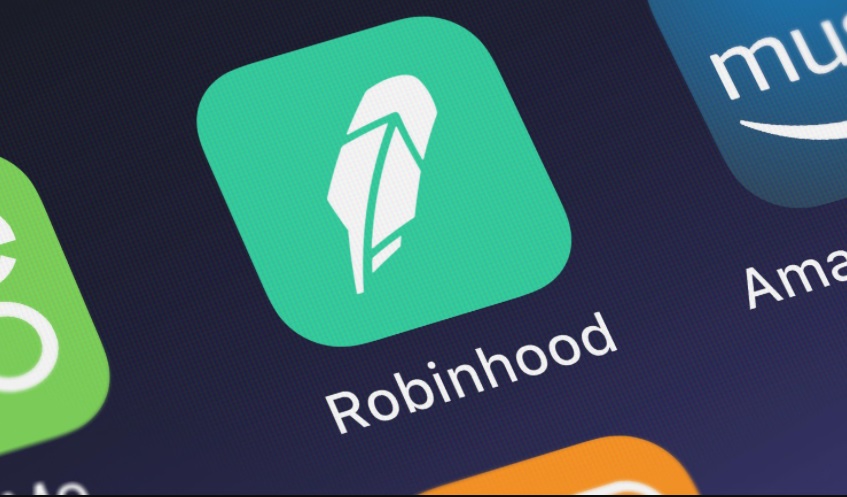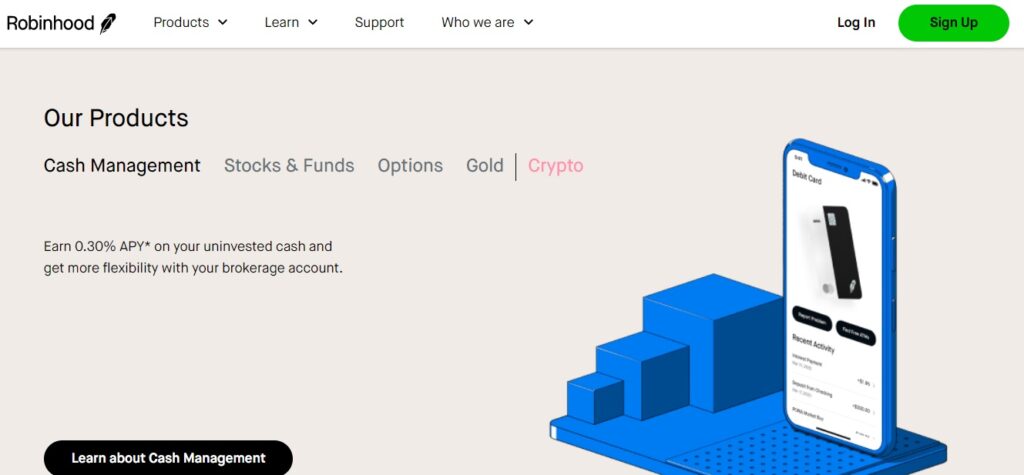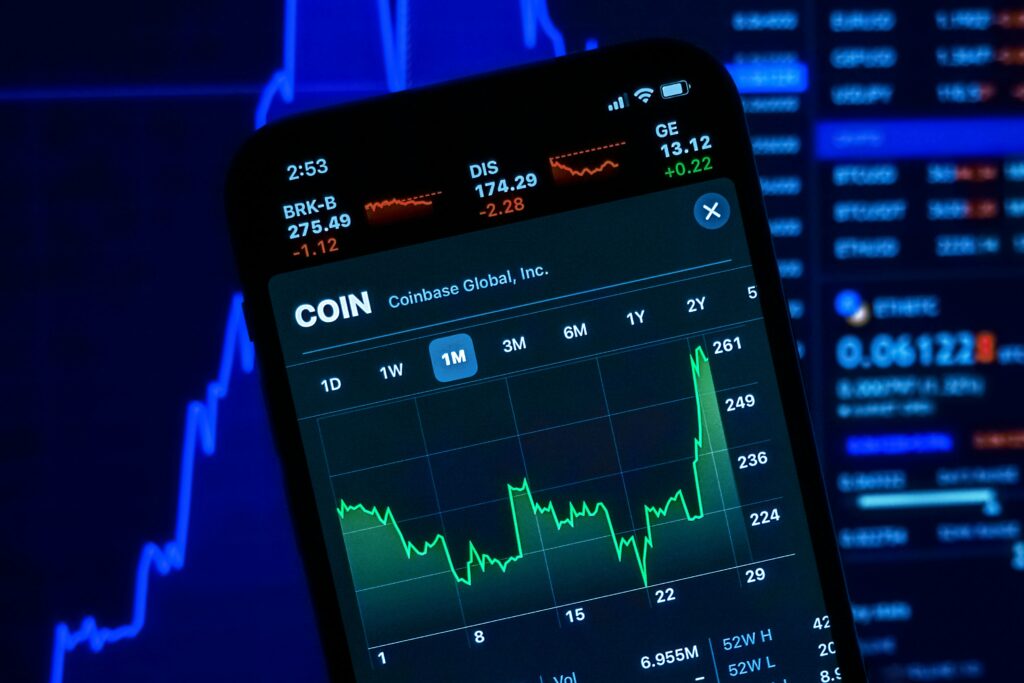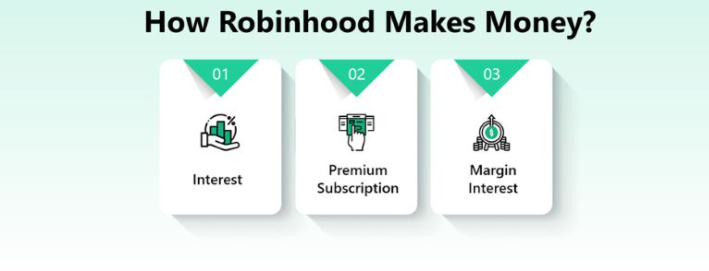
Introduction
Robinhood started commission-free trading back in April 2013. In the beginning, it seemed like a joke to established brokers. Now commission-free trading has become popular among investors and plenty of more investor-focused innovations are in progress.
Founded in 2013, Robinhood has become one of the foremost popular services among young investors in 2021. As of 2021, Robinhood has 18 Million users and having assets worth $80 Billion. Robinhood officially launched the Mobile App in 2015 with a user-friendly interface and account administration tools that allow investors to check real-time account balances, messages, security prices, and the latest investing news.
Products offered by Robinhood
Robinhood offers Stock Trading, Exchange Traded Funds (ETFs), Options, and Crypto Currencies trading. The following trading options have been offered by Robinhood for investors:
- Stocks
- More than 6900 symbols can be bought or sold in Robinhood. The broker offers both stocks and Exchange Traded Funds (ETFs).
- Single and multi-leg options
- Cryptocurrency: Bitcoin (BTC), Bitcoin Cash (BCH), Bitcoin SV (BSV), Dogecoin (DOGE), Ethereum (ETH), Ethereum Classic (ETC), Litecoin (LTC)

Is Robinhood free?
Usually, the investor pays a fee to a broker for their services. Online brokers like Fidelity and Charles Schwab have previously charged commissions from investors and recently switched to zero-fee trading.
For investors who trade Stocks, Exchange Traded Funds (ETFs), Options, or Crypto Currencies, Robinhood does not charge a commission. Investors will open an account in Robinhood and starts trading in Stocks, Exchange Traded Funds (ETFs), Options, or Crypto Currencies without paying any fee or a commission.
Here’s how Robinhood does it
The bid-ask spread
After an investor puts a market order on an application like Robinhood, the investor is telling a broker to urge the best possible price immediately. However buy and sell market orders don’t usually come into the market simultaneously, so companies referred to as “market makers” essentially sell the benefit of having your order executed immediately. Those market makers get a profit on what proportion someone is keen to sell a stock and the proportion somebody else is willing to buy: the difference is referred to as the bid-ask spread.
The market maker pays Robinhood for their client’s orders, a standard practice among retail brokers. This is a method through which Robinhood makes money. In 2020, Robinhood earned $628 Million in payment per order flow revenue, which is a 514 percent increase year on year.
The question is that do clients now get the premier price if a broker is curious to sell a market order to a market maker who can pay more? Robinhood resolved claims from the financial industry regulator in 2019 that it was not getting the best pricing for market orders (order payments are legal, but the Security Exchange Commission (SEC) requires companies to regularly review how they are executed). But at the time, Robinhood described the Wall Street Journal that “the facts on which the business is based do not reflect our current practices or procedures,” states on its website that orders are sent to the market maker who will most likely supply the customers best execution, supported historical performance. He has since hired a former Security Exchange Commission (SEC) commissioner as its chief legal officer.
Payment for Order Flow (PFOF)
Payment for Order Flow (PFOF) is one of the most reasons Robinhood is in a position to offer commission-free trading. Robinhood is marketed as a “free” app because users can found out a free account with no minimum investment. Annual fees, inactivity fees, ACH transfer fees, commission fees, and other costs associated with other brokerage firms will not be charged to users. Robinhood makes a profit through some kind of technique called payment for order flow, rather than charging fees. Payment for order flow means while they do not charge you anything to fill trade orders, they are doing scratch pennies from your transactions by routing the order through market makers like Citadel Securities.
Instead of being paired with a seller on the market, when a Robinhood customer places an order to buy or sell the stock, they are routed to a market maker, who can be trusted to absorb the transaction in a timely way blink of an eye fixed.
Conversely, and maybe more contentiously, market makers can pay Robinhood to route their clients’ orders to them, avoiding the need to compete in part.
When a user makes a transaction, Robinhood sends it to a third party, who uses it to place a large number of orders immediately for a little fee. Robinhood is then compensated by the larger corporation. The Payment for Order Flow (PFOF) requires Robinhood to sell its client’s market orders to third parties, who then execute the market orders and receive commissions, with some of the proceeds going to Robinhood as compensation for the routing of the client’s market order to that third party. Simply, the buyer has effectively become the product, rather than paying an instant fee.

How does Robinhood make money?
Here are the ways that show how Robinhood generates its majority of revenue:
Transaction-based revenues
Payment for order flow is a method by which Robinhood makes transaction-based money by channeling its clients Stock Trading, Exchange Traded Funds (ETFs), Options and Crypto Currencies orders to plug makers Payment for Order Flow (PFOF). Brokerage firms that employ Payment for Order Flow (PFOF) are compensated for directing orders to a specific market maker with a small fee. Although the payouts are typically fractions of a penny per share, they can be a significant source of revenue for organizations that handle a large number of orders.
Net interest income
Robinhood earns net interest income on securities lending transactions. In addition, interest is earned on user margin loans, and expenses are spent concerning the company’s revolving lines of credit.
Subscriber fees from Robinhood Gold
Subscription fees for Robinhood Gold are another source of revenue for premium clients. Robinhood Gold may be a paid subscription service that gives users premium features, including enhanced instant access to deposits, professional research, NASDAQ Tier II market data, and access to margin investing for approved users.
Fees on Transfers and Other Services
Robinhood is charged a transfer fee if a client does want to transfer its money to another broker. The client has to pay $75 as a transfer fee.

Reference or Links
https://www.entrepreneur.com/article/383785
https://www.businessinsider.com/robinhood-fees
https://www.investopedia.com/robinhood-review-4587919
https://money.com/robinhood-free-trades/
https://www.investopedia.com/articles/active-trading/020515/how-robinhood-makes-
https://www.fool.com/investing/2021/08/03/robinhood-understand-payment-for-order-flow/
https://seekingalpha.com/article/4447377-how-does-robinhood-make-money
